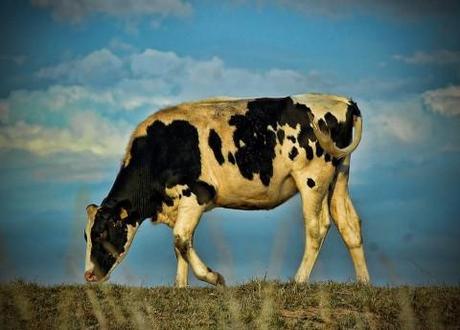
This cow does not have mad cow disease - yet. photo: Meneer Zjeroen
Back in the1980s and 1990s, the big scary health bugbear was bovine spongiform encephalopathy – better known to popular culture as “mad cow disease”.
Now that a case of mad cow disease has been detected in a dairy cow in California, the US’s first case in six years, the media are airing fears that the dreaded beef-borne illness is back. But what exactly is mad cow disease? And what does it do?
The California case. The disease was detected in a dead dairy cow in California, US authorities announced Tuesday, rushing to reassure importers and consumers that there is no threat that meat from the afflicted cow could enter the food supply chain and affect humans. Even so, some retailers in South Korea, one of the world’s largest importers of American beef, temporarily removed US beef from their shelves. It was the fourth case of mad cow disease ever found in the US and the 23 case in North America – 19 cases total have been found in Canadian-born cattle.
What is mad cow disease? Mad cow disease, officially known as bovine spongiform encephalopathy, is a progressive neurological disorder of cattle believed to be caused by “an unusual transmissible agent called a prion”, according to the American Centers for Disease Control. It is believed that the disease occurs when a normal prion protein mutates into a pathogenic, or harmful one, though, the agency added, “The nature of the transmissible agent is not well understood.” The infection will cause the appearance of spongy lesions on the brain and spinal cord. The disease takes years to develop in cows, and as such, it’s mainly older cows who exhibit symptoms, which can include the inability of the animal to stand up. But once symptoms appear, it is usually fatal within weeks.
What does it do to humans? In humans, the disease seems to manifest as a variant of Creutzfeldt-Jakob disease, a rare and very fatal human disease that causes the rapid deterioration of the brain, attended by mood swings, motor function impairment, loss of the ability to care for one’s self. More than 150 people worldwide, the majority in Britain, have died from contracting the disease, possibly through consuming tainted meat.
When was it first detected? The first cases of mad cow disease surfaced in Britain in 1986 (battering the country’s already poor reputation for hamburgers). The disease was eventually detected in around 184,000 cows, resulting in the slaughter of 4.4 million in an effort to curb the infection’s transmission. It is believed, according to the World Health Organisation, that the source of the disease was cattle feed made from infected bovine tissue, likely brain, spinal cord, or digestive tract – meaning that feeding cows other cows was not a good idea. The disease has since appeared in small numbers in Europe and as far away as the Falkland Islands; many of those cases were in cows imported from England.
What are governments doing to protect against mad cow? Mad cow disease is shockingly resilient – the offending prions are able to survive cooking, radiation, even autoclaving, normally used to sterilize lab equipment. As such, governments have tried to cut it off at the source: Since 1989 in the UK and 1997 in the US, cattle feed prepared with bovine or other ruminant (sheep, for example) tissues has been banned. The US Department of Agriculture also placed a ban on cattle importation from infected countries. So far, so good, but, The Washington Post noted recently, the California case has highlighted what some consider the “weak link” in the US beef supply: “the lack of a mandatory system to trace the path a cow takes from farm to fork.”
What about the economic impact? In the more than two decades since mad cow first appeared, the worldwide beef industry took some serious knocks. In 2003, for example, the first US case of mad cow prompted a $3 billion drop in exports after Japan, then the world’s top importer of US beef, halted beef imports. Japan re-instated importation two years later, but the damage was done.

